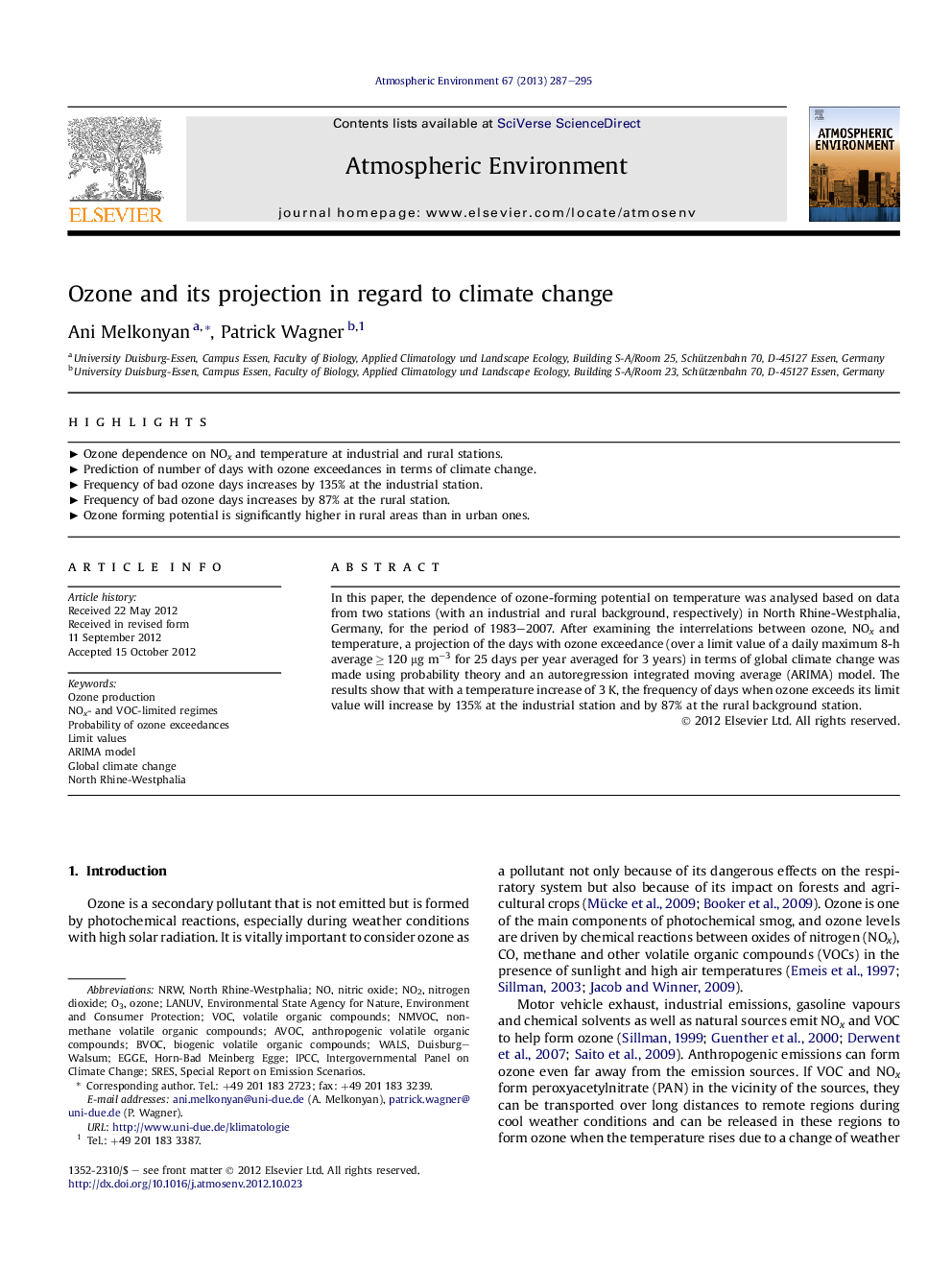| Article ID | Journal | Published Year | Pages | File Type |
|---|---|---|---|---|
| 4438498 | Atmospheric Environment | 2013 | 9 Pages |
In this paper, the dependence of ozone-forming potential on temperature was analysed based on data from two stations (with an industrial and rural background, respectively) in North Rhine-Westphalia, Germany, for the period of 1983–2007. After examining the interrelations between ozone, NOx and temperature, a projection of the days with ozone exceedance (over a limit value of a daily maximum 8-h average ≥ 120 μg m−3 for 25 days per year averaged for 3 years) in terms of global climate change was made using probability theory and an autoregression integrated moving average (ARIMA) model. The results show that with a temperature increase of 3 K, the frequency of days when ozone exceeds its limit value will increase by 135% at the industrial station and by 87% at the rural background station.
► Ozone dependence on NOx and temperature at industrial and rural stations. ► Prediction of number of days with ozone exceedances in terms of climate change. ► Frequency of bad ozone days increases by 135% at the industrial station. ► Frequency of bad ozone days increases by 87% at the rural station. ► Ozone forming potential is significantly higher in rural areas than in urban ones.
